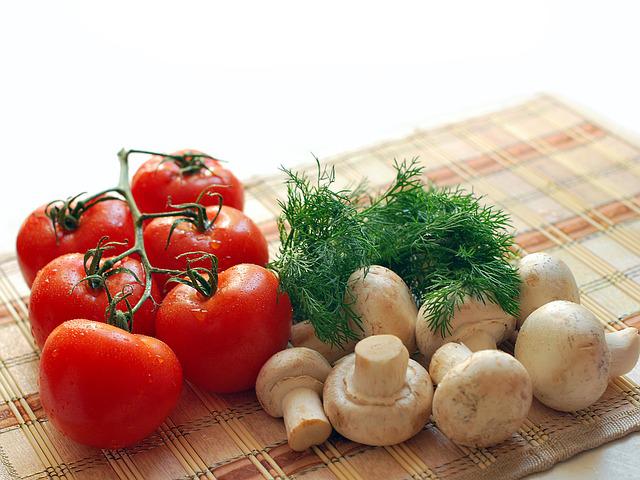
This page has vegan recipes high in fiber. Fiber is an important part of a plant-based diet, and it can help with a variety of health issues. Here are some methods to increase your fiber intake. First, it's essential to understand fiber and why your body needs it.
Healthy plant-based diet
Consuming a high-fiber diet can lower your chances of getting diabetes and heart disease. Fiber may also be beneficial for your gut health. Fiber is good for your digestive system, increasing the weight of your stool and making it easier to pass. Here are 20 foods high in fiber that are good for you.
A 2020 review found that a plant based diet can help you shed weight. Plant-based diets tend to have lower body fat than those following standard Western diets. This is due to high fiber and the healthy fats found in plant-based foods.

Fiber-rich foods
There are many fruits and vegetables that are high in fiber. Apples are a great example. They can be used in smoothies and baked goods. Broccoli, which is rich in antioxidant polyphenols, is also a good source of fiber. Bananas are another good source of fiber. Bananas can be used to make smoothies, breads, muffins, and even ice cream. A medium banana contains about 3 grams of fiber. A banana that's less ripe will contain more fiber.
Fiber is important for your digestive system. Fiber must be part of your diet. There are two types: insoluble and soluble fiber. Soluble fiber dissolves into water, and is vital for gut bacterial health. Insoluble fiber can be found in whole grains and vegetables.
How to increase your fiber intake
The vegan diet is naturally low in fibre, but there are several ways to increase your fiber intake. A good way to increase your fiber intake is to eat more whole grains. Unlike white bread and pasta, which have little to no fiber, wholegrain foods are full of fibre. A second way to increase fiber is to include a variety fruits, vegetables and nuts with every meal.
Fiber helps our digestive system work properly and is essential for our health. Fiber can prevent constipation as well as help alleviate IBS. It partially ferments in our gut and aids in digestion. Wholegrains, unpeeled fruits, and dried fruits are the best sources of fiber. It is important for you to know that fiber is only found in plant foods.

Sources of fiber
Many plant foods contain dietary fibers, such as fruits, whole grains and nuts. They aren't found in animal foods but are very nutritious. Fiber can be added to many foods and snacks, including whole grains, legumes, seeds, nuts, and pulses. Dried fruits are also a good source of fiber.
It is easy to increase your fiber intake by adding wheat bran to your recipes. This grain is very high in fiber and can be added to smoothies, cereal, and baked goods. A tablespoon of wheat brän contains 6 grams of fiber. That is 21 percent more than your daily intake of fiber.
FAQ
What lifestyle is most healthy?
Living a healthy lifestyle is one that encourages you to eat well, exercise regularly, get enough sleep, and avoids stress. If you follow these guidelines, you will be able to lead a long and healthy life.
You can start by making small changes in your diet and exercise routine. Try walking for 30 minutes daily if your goal is to lose weight. For more activity, you can try swimming or dancing. You can also sign up for an online fitness program like Strava or Fitbit to track your activity.
Get immune enhancement with herbs and supplements
It is possible to boost immune function by using herbs and natural remedies. Ginger, garlic, ginger, oregano oils, echinacea and ginkgo biloba are some of the most common.
These herbal remedies should not be used in place of conventional medical treatment. They may cause side effects such as nausea, diarrhea, stomach cramps, headaches, dizziness, and allergic reactions.
What are 10 healthy habits you can adopt?
-
Have breakfast every day.
-
Don't skip meals.
-
Maintain a balanced diet.
-
Drink plenty of water
-
Take care of yourself.
-
Get enough rest.
-
Stay away from junk foods.
-
Do some form of exercise daily.
-
Have fun
-
Make new friends
How to measure body weight?
A Body Fat Analyzer (BFA) is the best method to measure bodyfat. These devices can be used to measure body fat percentages in people who are trying to lose weight.
Statistics
- Extra virgin olive oil may benefit heart health, as people who consume it have a lower risk for dying from heart attacks and strokes according to some evidence (57Trusted Source (healthline.com)
- This article received 11 testimonials and 86% of readers who voted found it helpful, earning it our reader-approved status. (wikihow.com)
- nutrients.[17]X Research sourceWhole grains to try include: 100% whole wheat pasta and bread, brown rice, whole grain oats, farro, millet, quinoa, and barley. (wikihow.com)
- According to the 2020 Dietary Guidelines for Americans, a balanced diet high in fruits and vegetables, lean protein, low-fat dairy and whole grains is needed for optimal energy. (mayoclinichealthsystem.org)
External Links
How To
What does the term "vitamins" mean?
Vitamins can be described as organic compounds found in food. Vitamins allow us to absorb nutrients from food. Vitamins cannot come from the body so food must provide them.
There are two types vitamins: water soluble or fat soluble. Water-soluble vitamins dissolve readily in water. Examples include vitamin C,B1 (thiamine), B2 (riboflavin), B3 (niacin), B6 (pyridoxine), folic acid, biotin, pantothenic acid, and choline. The liver and fatty tissue are the main storage places for fat-soluble vitamins. These include vitamin D, E and K, as well as beta carotene.
Vitamins can be classified according to biological activity. There are eight main groups of vitamins.
-
A - Essential for healthy growth and health maintenance.
-
C - vital for nerve function and energy generation
-
D - necessary for healthy bones and teeth.
-
E - needed for good vision and reproduction.
-
K - essential for healthy nerves, muscles, and joints.
-
P - vital for building strong bones andteeth.
-
Q – aids digestion and absorption.
-
R - necessary for making red blood cells.
The recommended daily allowance (RDA), for vitamins, varies based on gender, age, and physical condition. RDA values are set by the U.S. Food and Drug Administration (FDA).
For adults over 19 years, the RDA is 400 mg per day for vitamin A. Because it is essential for the development of the fetus, pregnant women should consume 600 micrograms per days. Children ages 1-8 require 900 micrograms per day. Infants below one year of age need 700 micrograms daily. But, between 9 months to 12 months of age, the amount drops to 500micrograms per days.
Children aged 1-18 years need 800 micrograms daily, while children overweight require 1000 micrograms per days. Children who are severely obese or underweight will need 1200 micrograms each day.
Children aged 4-8 years old who have been diagnosed as having anemia require 2200 micrograms of vitamin C per day.
2000 micrograms per person is necessary for general health. Breastfeeding or pregnant women require 3000 micrograms per daily due to higher nutrient demands.
Adults over 70 years of age need 1500 micrograms per day since they lose about 10% of their muscle mass each decade.
Women who are pregnant and lactating need more nutrients than the RDA. Pregnant women require 4000 micrograms daily during pregnancy, and 2500 micrograms every day after birth. Breastfeeding mothers need to consume 5000 micrograms each day when breastmilk has been produced.